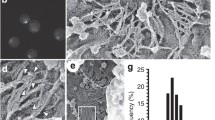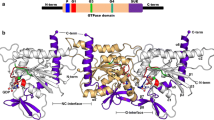Abstract.
The septins are well conserved GTPases found in animals and fungi. In yeast, they are required for the formation of 10-nm filaments, with which they co-localize at the bud neck. Therefore, septins have been proposed to be components of the neck filaments and to have polymerization properties. In support of this hypothesis, septin complexes purified from yeast and flies form filaments in vitro. However, recent studies have questioned the relevance of septin filament formation for septin function. Particularly, septin polymerization may not be required for their function in cytokinesis. New septin functions have also been recently uncovered: in budding yeast, the septin ring is required for the maintenance of cell polarity. It forms a cortical barrier that prevents lateral diffusion of membrane-associated proteins through the bud neck. Here, we review the most recent functional and biochemical data, to discuss whether there is a link between septin polymerization properties and septin function.
Similar content being viewed by others
Author information
Authors and Affiliations
Additional information
Electronic Publication
Rights and permissions
About this article
Cite this article
Faty, M., Fink, M. & Barral, Y. Septins: a ring to part mother and daughter. Curr Genet 41, 123–131 (2002). https://doi.org/10.1007/s00294-002-0304-0
Received:
Accepted:
Issue Date:
DOI: https://doi.org/10.1007/s00294-002-0304-0




